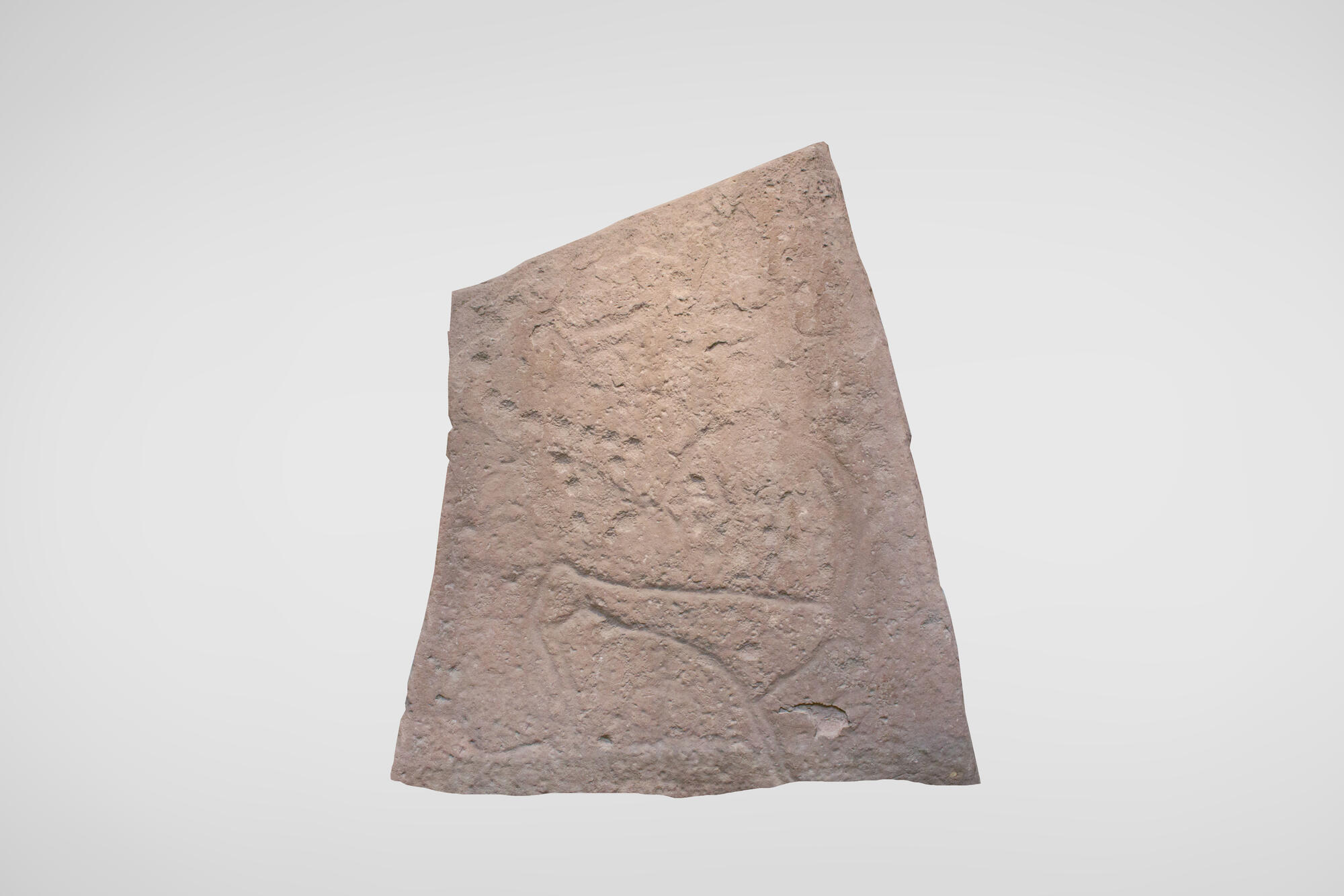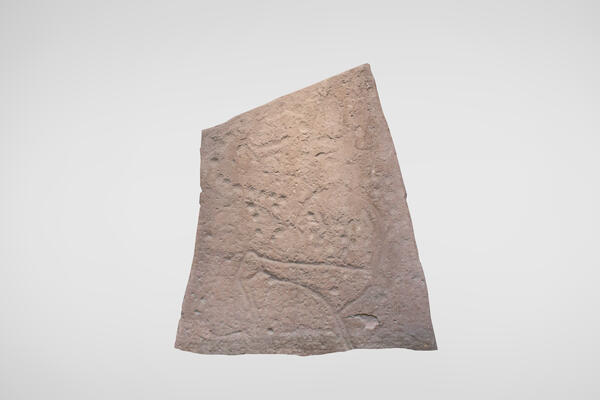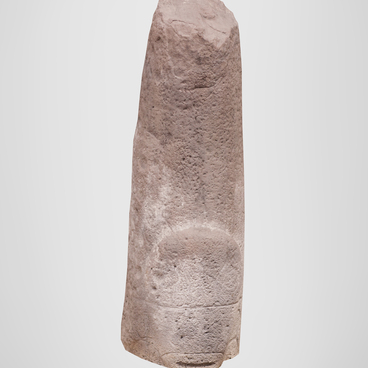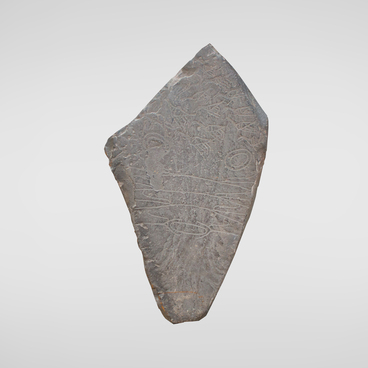The historical and cultural heritage of the Republic of Khakassia is diverse. According to some reports, there are about 30-32 thousand above-ground archaeological monuments on its territory.
In Khakassia there are burial mounds, “sve” fortresses, ancient settlements, rock paintings, as well as large stone statues. This diversity is explained by the fact that for several millennia different peoples lived here. Iranian, Mongolian, Turkic, Finno-Ugric and other cultures mutually influenced each other.
The collection of the museum contains a stone slab with schematic images — a monument of the 8th-3rd centuries BC. It dates back to the early Iron Age.
The red sandstone slab has the shape of a trapezoid; its upper edge is beveled from right to left at an angle of 25 degrees. On the sandstone there is an image of a deer, 50 by 80 centimeters in size. An unknown craftsman made it using the technique of pecking, characteristic of the Tagar culture of that time. He depicted the deer in profile, and then polished the contour lines. A deer’s face, lean body with a broad chest and two pairs of legs are sketchy.
One of the main occupations of this era on the left bank of the Yenisei was cattle breeding. Presumably, the population branch that lived on these lands led a nomadic lifestyle.
In the Tagar culture, decorations in the form of wild and domestic animals were often found. One of these decorations, which was applied to various objects, was the image of a deer. Some researchers associate the appearance of the image of a deer in the Tagar culture with Scythian influence.
There are about 10 types of deer images. Animals differ in posture, the presence or absence of eyes in the drawing, the shape of the horns, and much more. Deer, which were engraved on a stone in full height, were less common than deer with bent legs. The latter were usually applied to Tagar weapons.
Stone processing in the Tagar culture was developed no worse than the processing of metals. A number of researchers attribute images similar to those shown in the museum to a separate type of early cave paintings. Most often they were found on mounds and gravestones. Zoomorphic motifs (images of animals) belonged to the later ones.
In Khakassia there are burial mounds, “sve” fortresses, ancient settlements, rock paintings, as well as large stone statues. This diversity is explained by the fact that for several millennia different peoples lived here. Iranian, Mongolian, Turkic, Finno-Ugric and other cultures mutually influenced each other.
The collection of the museum contains a stone slab with schematic images — a monument of the 8th-3rd centuries BC. It dates back to the early Iron Age.
The red sandstone slab has the shape of a trapezoid; its upper edge is beveled from right to left at an angle of 25 degrees. On the sandstone there is an image of a deer, 50 by 80 centimeters in size. An unknown craftsman made it using the technique of pecking, characteristic of the Tagar culture of that time. He depicted the deer in profile, and then polished the contour lines. A deer’s face, lean body with a broad chest and two pairs of legs are sketchy.
One of the main occupations of this era on the left bank of the Yenisei was cattle breeding. Presumably, the population branch that lived on these lands led a nomadic lifestyle.
In the Tagar culture, decorations in the form of wild and domestic animals were often found. One of these decorations, which was applied to various objects, was the image of a deer. Some researchers associate the appearance of the image of a deer in the Tagar culture with Scythian influence.
There are about 10 types of deer images. Animals differ in posture, the presence or absence of eyes in the drawing, the shape of the horns, and much more. Deer, which were engraved on a stone in full height, were less common than deer with bent legs. The latter were usually applied to Tagar weapons.
Stone processing in the Tagar culture was developed no worse than the processing of metals. A number of researchers attribute images similar to those shown in the museum to a separate type of early cave paintings. Most often they were found on mounds and gravestones. Zoomorphic motifs (images of animals) belonged to the later ones.



